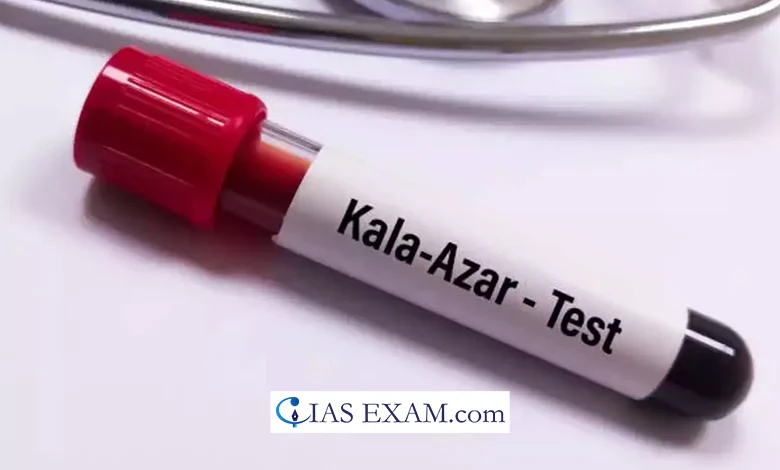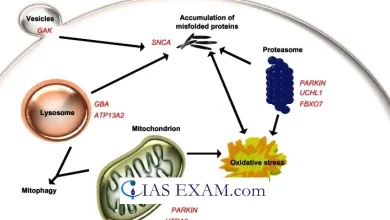India Achieves Kala-Azar Elimination Goal
Syllabus: Health [GS Paper-2]

Context
India has successfully reached its goal of eliminating kala-azar, also known as visceral leishmaniasis, according to data from the National Centre for Vector Borne Diseases Control. The original target date for elimination was 2010, but it was extended to 2023 due to ongoing difficulties.
Details
India has made significant strides in eliminating visceral leishmaniasis, commonly known as Kala-Azar.
Key details
- Efforts and Progress: India has been working towards eliminating Kala-Azar as a public health problem. After years of steady progress, the country has implemented several measures and cross-sectoral interventions.
- Centres of Excellence: Four centres of excellence have been established in disease-endemic areas to provide specialised care for complicated cases of Kala-Azar.
- Vector Control: India has extended the vector control by using rational interventions. This is established by the spray process into the principal rooms of houses of villages that registered cases for the past three years. This comes by the annual general application of the two rounds of indoor residual spraying covering 35–38 million people of those at risk.
- Treatment Accessibility: National Vector and Borne Disease Control Programme (NVBDCP) has made provision of diagnosis and primary health care service more accessible and focused especially on rural areas where Kala-Azar and other vector borne diseases are prevalent.
- Global Strategy: The Indian policy concurs with the Global Vector Control Response, which enfolds the whole vector management such as preventive and control of vector diseases.
- Current Status: The year back had seen a drastic decline in the number of cases reported in India backed by the latest stats which indicate that the country is on the brink of complete Kala-Azar elimination.
Kala-Azar
- Kala-Azar, also known as visceral leishmaniasis, is a severe and potentially fatal parasitic disease caused by the protozoan parasite Leishmania donovani. It is transmitted through the bite of infected sandflies.
- Symptoms of Kala-Azar: Symptoms of Kala-Azar include prolonged fever, weight loss, swelling of the spleen and liver (hepatosplenomegaly), and anaemia. If left untreated, it can lead to severe complications and death.
- Transmission of Kala-Azar: The disease, kala-azar, is transmitted primarily by the sand fly whose female population is infected, from the genera of Phlebotomus, in India Subcontinent and Eastern Africa regions. People, who are the most infected with the parasite, play a role as the primary source of it.
- Diagnosis and Treatment: Diagnosis of Kala-Azar comes to the clinical evaluations, identification of the parasite in tissue samples, and application of the serological tests. In the course of the treatment the drugs containing antinomies the sodium stibogluconate and miltefosine intravenously and orally are mostly used. Owing to the recent developments regarding its better effectiveness and shorter duration of schedule, the liposomal amphotericin B has become the first choice of treatment for the fungal infections.
- Control and Elimination Efforts: Vector control methods like insecticide spraying, mosquito nets impregnated with insecticides, and space management are widely used to prevent contracting the disease. Equally important, detection and immediate management of the affected cases reduce the chance of outbreaks. Vaccines that have been under development are still unavailable.
Government efforts to eliminate Kala Azar
- The Indian government advocated numerous substantial steps to eliminate Kala Azar and this was a priority in the strategy to achieve its goal of eradication.
- The authorities embarked on rigorous spraying of interior walls to cut harbouring of sand fly larvae.
- To enhance the infrastructure, a special soil had been found to plug the gaps missed by local mud walls, thereby deterring sand flies from creating nests.
- With the plan of ease of full twelve-week treatment of Miltefosine for the PKDL patients; the ASHA network provided these services.
- The PM-AWAS yojana was associated with the ambitious project of the construction of durable houses and as a result, this significantly decreased the risk of people being bitten by sandflies.
- Together with the remaining activities of monitoring and involving community members, those efforts contributed remarkable progress and allowed us to finally announce that the World Health Organization’s goal had been accomplished, which means that no region reported more than one case per 10,000 population.
Conclusion
The elimination of Kala-Azar in India is a result of government interventions, including indoor spraying to kill sandflies, sealing potential breeding sites, and mobilising healthcare workers to ensure proper treatment completion. This achievement marks a major milestone in public health for the country.
Source: BS
UPSC Prelims Practice Question
Q.Which of the following is the causative agent of Kala-Azar?
a) Plasmodium falciparum
b) Leishmania donovani
c) Trypanosoma cruzi
d) Toxoplasma gondiiAns – “b”





.png)



